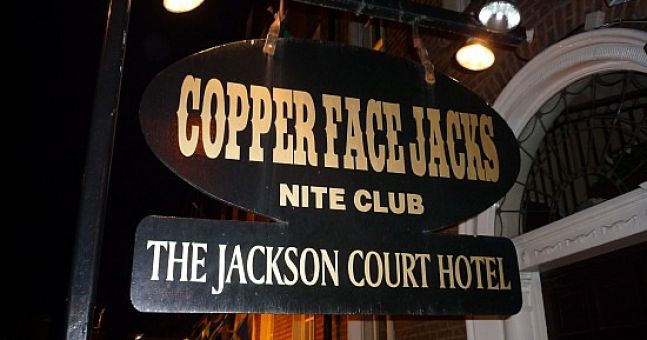For some, the cultural phenomenon of Coppers is the height of Dublin’s sweaty, boozy club scene – it is heteronormative, middle-class and generally a bit of fun. For others, however, it’s simply unavoidable, one of too few nightlife options available to those who wish to head for a night out in Ireland’s capital.
A recent Irish Times article highlighted Dublin’s dearth of clubbing options beyond the chart/house variants. It notes that, with the closure of Hangar, Dublin’s city centre no longer has a designed-for-purpose music-driven nightclub. While the article may have focused on certain types of clubs, we must question the overall quality of the scene when punters typically end up in Coppers. After all, this is a club with no outstanding features beyond the much fabled “craic” that is had there – it lacks speciality drinks, decorations or a stellar sound system. While many argue that its famous atmosphere is a worthy mark of success given that night clubs exist as places of revelry, it’s worrying when the already small number of alternatives that one might want to visit seems to go down every month.
While the media may like to portray the club scene as dangerous and antisocial, these spaces can serve as protective spaces of camaraderie and freedom in the middle of an often hostile city
As the capital of a nation with a reputation for knowing how to party, we should surely harbour greater clubbing ambitions. While I enjoy an odd night in Coppers as much as the next person, it’s a decidedly mainstream venue – not a bad thing as a general rule, but clubs should also appeal to different groups. There’s a reason that the recent closure of many of Ireland’s LGBT nightclubs, including Dublin’s The Dragon, has been met with such dismay – while the media may like to portray the club scene as dangerous and antisocial, these spaces can serve as protective spaces of camaraderie and freedom in the middle of an often hostile city.
Nightclubs are places of excess and release, oases free from the constraints of normal life. In other countries, such as stereotypically austere Germany, certain clubs have extended from a purely musical offering to accommodating a diverse range of interests, even evolving into sex clubs, where group sex is openly facilitated. Although this kind of outlet is foreign to many people, the importance lies in the variation such that institutions of every colour have their place. After all, what right do we have to tell other adults how they can and cannot enjoy themselves?
As spaces like Sweeney’s close and former clubbing spaces like Andrews Lane Theatre are being repurposed, the success of District 8, which has innovatively toyed with the traditional clubbing model to open in fixed seasons – thereby avoiding the stagnation of weekly familiarity – has been promising. While District 8 focuses on electronic music, similar developments in genres of jazz, rock and interests outside of music, such as art, would be encouraging. An art gallery-styled club could be excellent and innovative, like navigating the different sections in Workman’s but with added visual stimulation. Clubs are, by nature, surreal escapes from sober reality, and using them as artistic outlets would adhere to this idea.
Considering that so many people face financial uncertainty at a time when living costs are rising and real wages stagnate or decline, an appetite for more diverse clubbing options may exist
As a city famed for its clubbing culture, Berlin’s nightlife originated following the subjugation the city underwent as a result of political fissure. Similarly, in the nineties, rave culture came to prominence in the areas of northern England that were most heavily impacted by the collapse of industry, under the Conservative rule of Thatcher. Nobody would seriously advocate diversity in clubbing to come at the expense of economic turmoil. However, considering that so many people face financial uncertainty at a time when living costs are rising and real wages stagnate or decline, an appetite for more diverse clubbing options may exist.
Ireland’s restrictive licensing laws hamper the development of a diverse clubbing culture, since most clubs are officially meant to stop serving drinks at 02:30am. The typical night out routine of pre-drinks and cheap alcohol promotions, before clubs eject intoxicated patrons to the street all at once, encourages antisocial behaviour and the street tensions that tarnish closing time. Consider the alternative: allowing clubs to act like shops by opening for whatever time they please, in compliance with the relevant noise restrictions in an area. Such a freedom would pave the way for a truly diverse nightlife scene in Dublin.
Those who want a particular type of nightlife experience could then fulfil that desire. Overnight private parties are already held throughout the city, but they would be safer for all involved if operating under licensing and insurance, which comes with being a legal entity. Where there is demand there is also supply, and so we could not expect these types of parties to simply disappear. To that end, event managers should be allowed to offer all sorts of parties: be they sober-only, nights for older people, or techno at dawn. Not only would this affirm Dublin as a party destination, it would give consumers greater choice. In a capital city, would-be clubbers shouldn’t find Coppers to be the only possible destination after 2:30am on a night out.







